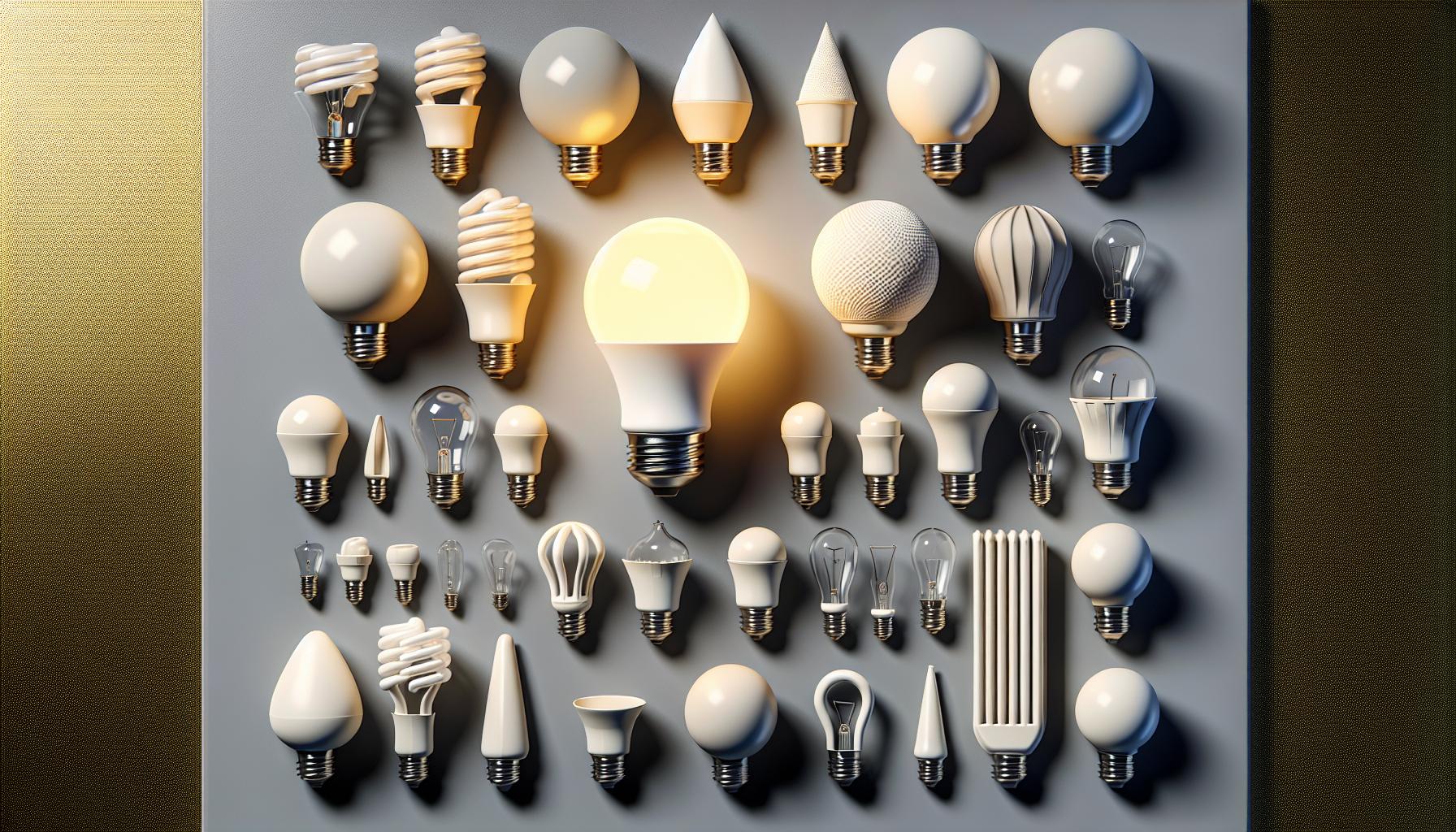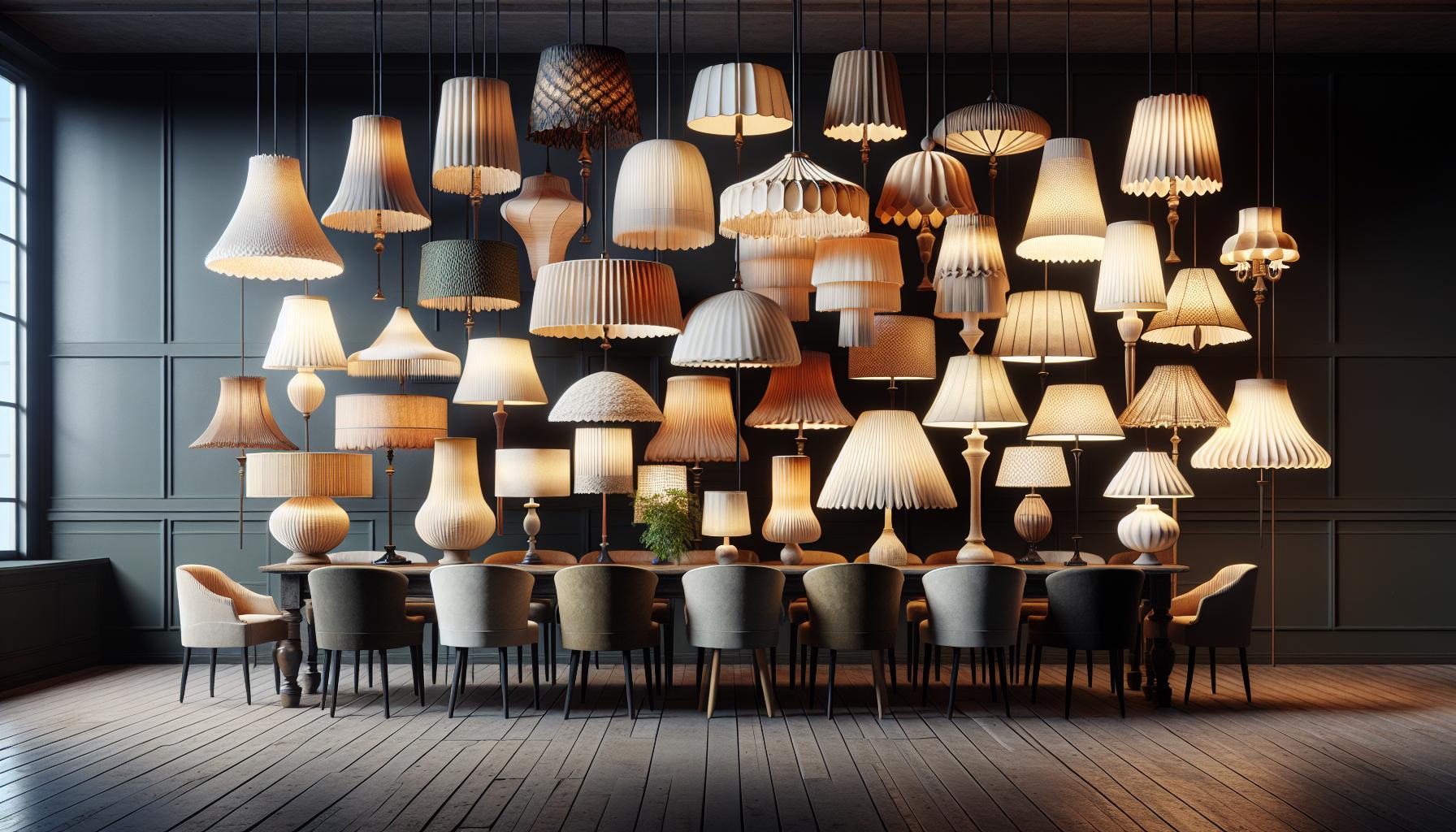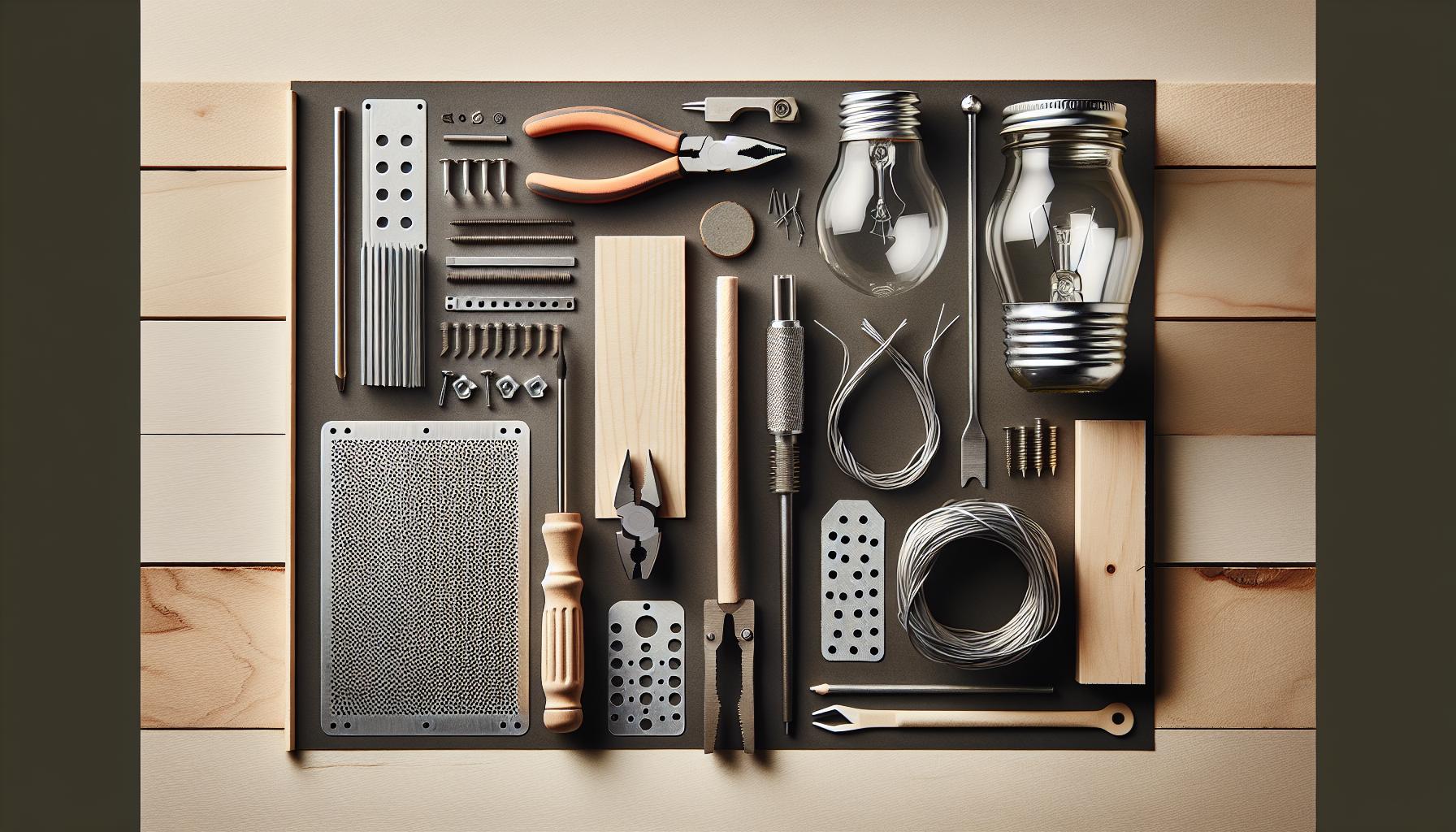Ever found yourself squinting under the harsh glow of a bare bulb? You’re not alone! It’s time to soften up that light and add a touch of style to your space. But before you start draping fabric willy-nilly, let’s talk safety and style.
Covering a light bulb isn’t just about dimming the brightness; it’s a chance to transform the ambiance of your room. From chic lampshades to DIY solutions, you’ve got options. Let’s dive into the world of creative and safe light bulb coverings that’ll elevate your decor game.
Why Cover Light Bulbs?
You might be wondering why it’s such a good idea to cover light bulbs in the first place. Light quality plays a pivotal role in creating a comfortable environment in your home. Bare bulbs often emit a harsh, intense glow that can strain your eyes and overpower the subtle design elements in a room. By choosing the right covering, you’ll not only reduce glare but also diffuse light to achieve a soft, ambient atmosphere that’s easy on the eyes.
Covering light bulbs doesn’t just improve the quality of light. It’s also about aesthetics. Lampshades and covers act as a decorative accessory, just like a piece of art or a vase. These additions can introduce new colors, textures, and patterns to your decor, making it a breeze to change the look and feel of a space without extensive renovations. As a DIY enthusiast with a penchant for upgrading every corner of your space, you’ll appreciate the transformative impact of a well-chosen light bulb cover.
From a practical standpoint, safety is key. Exposed bulbs can be a safety hazard, especially in homes with curious kids and pets. Covers prevent accidental burns and reduce the risk of a shattered bulb. Moreover, some coverings are designed to be fire-resistant, offering an extra layer of protection against potential hazards.
When you’re navigating the world of light bulb coverings, keep in mind that not all bulbs are created equal. LED bulbs, for example, tend to operate at a lower temperature than incandescent ones, which opens up more options for stylish coverings. Always check the maximum wattage and compatibility before adding any covering to ensure you’re not only stylish but also safe.
Safety First: Choosing the Right Bulb Covering
When you’re on the hunt for the perfect light bulb covering, it’s paramount to put safety at the forefront of your decision. The cover you choose must withstand the heat generated by the bulb without posing a fire hazard or melting over time. It’s essential to match the cover with the type of bulb you have—be it an incandescent, LED, or compact fluorescent.
Let’s break it down: incandescent bulbs get hotter than the rest, so you’ll need a covering that can handle high temperatures. LEDs, on the other hand, stay cooler, giving you more leeway with material choices. Always look for UL-listed covers, which indicates they’ve been tested for safety standards.
Besides heat resistance, consider the fitting. The right cover should allow for enough airflow to prevent overheating, yet fit snugly enough to avoid slippage which can be hazardous. Here’s a quick checklist for your cover hunt:
- Match the covering to the bulb type
- Check for heat resistance
- Ensure proper fitting and ventilation
- Look for UL certification
When browsing options, you might be tempted by beautiful vintage covers or maybe you’re itching to craft a DIY solution. Whatever you lean towards, ensure that your pick aligns with safety guidelines. For DIY enthusiasts, use materials like wire mesh or heat-resistant fabrics. Avoid flammable materials like paper unless your setup uses a very low-heat bulb, like an LED, but even then, caution is your best friend. Remember, the bulb’s wattage and the cover’s maximum wattage rating should be in harmony.
Keep in mind that while style is significant, it should never trump safety. You’re not only creating a striking visual but also ensuring the well-being of your home and loved ones. With safety boxes ticked, you can sway towards the creative side and let your inner decorator roam free, crafting a space illuminated with both style and peace of mind.
Option 1: Stylish Lampshades for a Classy Look
When you’re aiming to enhance the ambiance of your space, stylish lampshades are a game-changer. They’re not just covers; they’re a statement piece that can effortlessly shift your room’s look from mundane to sophisticated. Lampshades come in an array of shapes, sizes, and materials, each offering a unique vibe and directionality to the light in your room.
« Are LED Light Bulbs Good for Plants? Unlock Growth with These Tips
How Long Do Light Bulbs Last in Storage: Tips to Maximize Lifespan »
Opting for a fabric lampshade gives you versatility in texture and color, allowing you to customize the feel of the light and your space. Consider the room’s color scheme and the sort of atmosphere you’re looking to create. For a softer, diffused glow that’s perfect for winding down, go with lighter, opaque fabrics. If you’re after a vivid burst of color that stands out, brighter, translucent materials might be your go-to.
If sustainability is a part of your ethos, seek out lampshades made from recycled or eco-friendly materials. They not only give your home an air of eco-consciousness but also spark conversations about environmental responsibility.
The choice of a lampshade is also a practical one. Some are designed to effectively reduce glare and eyes strain—ideal for reading nooks or home offices.
Here’s what you should consider when picking a lampshade:
- Size and Proportion: Make sure the shade is proportionate to both the bulb and the base of the lamp.
- Fitting: Check if the lampshade fits well with your fixture. A misfit can lead to a slipped or tilted shade.
- Functionality: The shade’s purpose should align with how you intend to use the light, whether for concentrated task lighting or ambient glow.
Remember, lampshades can also influence the light output. Darker shades can absorb light, whereas lighter ones reflect it more effectively. So, take a moment to envision how each shade will interact with the light before making your decision.
Lampshades are more than just covers. They’re a blend of function and fashion that cater to your lighting needs while accentuating your home’s décor.
Option 2: DIY Light Bulb Covers for a Personal Touch
Taking on a DIY project lets you add a personal touch to your space and when it involves lighting, the rewards are two-fold: you enhance the light and make an artful statement. Homemade light bulb covers can be as simple or complex as you’d like, and they let you express your creativity while personalizing your space to your taste.
First, consider materials that are safe to use as light bulb covers. High-heat-resistant materials are a must to reduce the risk of fire and ensure safety. Materials like glass, metal, and certain fabrics can work well, just ensure they’re placed at a safe distance from the bulb to avoid overheating.
Choosing the Right Materials and Tools
When selecting materials for your DIY light bulb cover, you’ll want to balance durability with aesthetics. Consider these popular options:
- Perforated metal sheets: which are ideal for an industrial look and offer excellent heat resistance.
- Mason jars: can give an ambient glow and create a vintage or rustic look.
- Birch veneer: is great for softer, diffused light and a warm, natural feel.
Make sure you have the right tools on hand as well. You’ll likely need a:
- Screwdriver(for any disassembly)
- Wire cutter
- Pliers
- Heat-resistant adhesive, if necessary
Building Your Own Creation
Starting a DIY light bulb cover project involves a good amount of planning. Before you start crafting, sketch out your design and note the dimensions. It’s vital to ensure that your cover will fit securely around the light fixture and the bulb itself. Test out how the light shines through your chosen material—a softer, translucent material may give off a gentle luminosity, whereas a denser, opaquer material can focus the light directionally.
In crafting your light bulb cover, add openings or patterns to dictate how the light escapes. Get creative! Use stencils, punch holes for a starry effect, or even paint on the material for a stained glass look.
Remember, your DIY light bulb cover shouldn’t rest too closely to the bulb to avoid any hazard. And with any lighting project, check the electrical aspects; ensure the power is off when installing or making adjustments to your masterpiece.
Option 3: Creative and Unconventional Bulb Coverings
Beyond the conventional shades and DIY crafts, your home lighting can take a turn towards the truly unique with some creative and unconventional bulb coverings. When conventional designs don’t captivate your imagination, unleash your inner artist to make a statement with your lighting.
Conventional wisdom suggests staying within the safe confines of well-known materials and designs, but you’re not bound to follow these when it comes to crafting a bulb covering that’s both functional and a complete showstopper.
Consider Upcycled Items for a bulb covering. Everyday objects can transform into extraordinary light covers with a little ingenuity:
- Old colanders can act as funky, industrial-style covers.
- Vintage hats or birdcages can provide a whimsical touch.
- Repurposed wine glasses or bottles present an elegant solution.
The key here is to see the potential in objects that aren’t typically associated with lighting. Not only do you add a layer of personalization, but you’re also participating in an eco-friendly practice by giving a second life to items that might otherwise end up in a landfill. Just remember to alter these items with safety in mind, maintaining ample distance between the bulb and the cover.
Experimentation with Shapes and Textures can yield some unexpected results. Try materials that you might not first associate with light, such as:
- Woven baskets for a soft, diffused glow.
- Acrylic sheets that can be moulded into modern designs.
- Silicone molds designed for baking, now repurposed to scatter light in playful patterns.
These approaches not only redefine your room’s aesthetic but also influence the mood through unique light diffusion. You’ll want to test how these materials react to light before finalizing your design. Does the light scatter in an interesting way? Does it cast fascinating shadows or provide the kind of ambiance you were seeking?
Sometimes, unconventional means multi-functional. Light coverings could also serve as:
- Art installations that encapsulate the bulb.
- Shelves with cut-outs for fashionable yet practical purposes.
- Terrariums for an organic feel, with adequate ventilation, of course.
Your lighting is an extension of your personality and creativity. Whether transforming found objects into artful covers or playing with materials for their textural qualities, your options are boundless. Keep pushing the boundaries and you just might find your lighting becoming the conversation piece of any room.
Conclusion
You’ve got the tools to transform any ordinary light bulb into a statement piece that reflects your personal style. Remember to play with different materials and embrace the potential of everyday objects to become part of your home’s unique ambiance. Whether you’re aiming for a subtle glow or an eye-catching display, your creativity is the only limit. So go ahead, make your lighting unforgettable and let your space shine in a new light!
Frequently Asked Questions
What are some unconventional items that can be used as bulb coverings?
Repurposed items like old colanders, vintage hats, birdcages, and recycled wine glasses or bottles can all serve as creative bulb coverings.
Can light coverings be multifunctional?
Yes, aside from being purely decorative, light coverings can also serve as art installations, shelves, or terrariums, adding functionality to their form.
How should one approach experimenting with different materials as bulb covers?
When experimenting with materials like woven baskets, acrylic sheets, or silicone molds, it’s important to test how they react to light and consider their light diffusion properties.
Is it possible to make a lighting fixture into a conversation piece?
Absolutely. By pushing the boundaries with unique materials and designs, your lighting fixture can easily become a focal point that sparks conversation.





